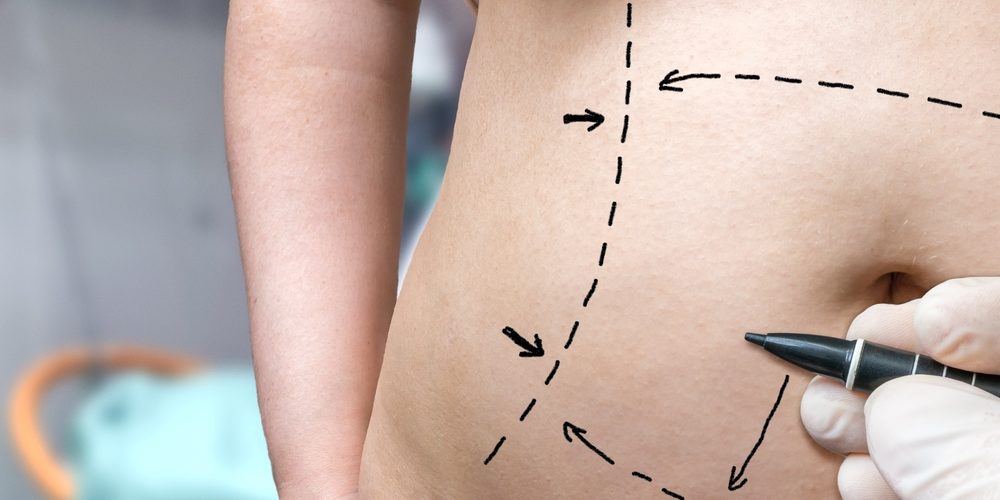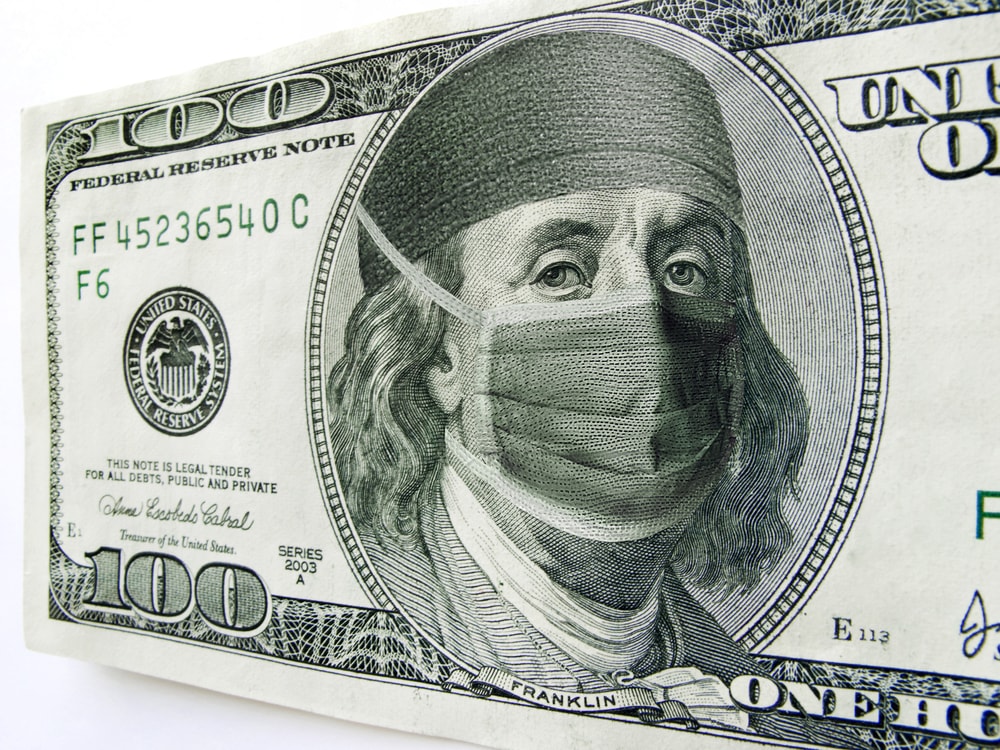Considering a tummy tuck procedure but you’re concerned about the recovery time and potential complications? Your fears may be based more in fiction than fact.
Tummy tucks, also known as abdominoplasty, are one of the most popular cosmetic surgery procedures in the United States, with some 130,000 procedures performed each year.
Compared to other procedures, it does have a slightly higher risk of complications. Of course, with caution, and a carefully planned tummy tuck recovery period, many of these complications can be avoided.
Here we’ve brought in four plastic surgeons to discuss tummy tuck misconceptions, risks, recovery tips, and expected recovery time.

Abdominoplasty risks, complications, and common misconceptions
“A common misconception is that a tummy tuck is a simple procedure,” says New York City plastic surgeon Dr. Anthony Taglienti. In fact, the procedure is quite involved. “A tummy tuck can include a long incision, the removal of skin and fat, the suturing or plication of abdominal muscles, along with liposuction. Therefore, it can take some time to recover,” says Taglienti.
By removing excess fat and skin and restoring weakened or separated abdominal muscles, this popular surgical procedure flattens and tightens the abdomen, helping refine the contours of the belly when diet and exercise fail.
However, abdominoplasty is not considered a weight loss procedure.“One problem with the majority of patients is that they think it’s okay to have a tummy tuck just because they are overweight,” says New York City plastic and cosmetic surgeon Dr. Leonard Grossman. “Being overweight results in the majority of complications associated with tummy tucks.”
While complications are rare, no surgery is without its risks and side effects, even among ideal candidates.
“Potential things that could go wrong include skin infections, wound healing problems, seroma formation, hematoma formation, muscle plication suture failure, ‘dog ears’ or extra tissue on either side of the incision along the hips, blood clots, and uneven or unsightly scars,” says plastic and reconstructive surgeon Dr. Megan Jack from Boca Raton, FL.
“Other expected side effects — not complications — that we see after tummy tuck surgery are swelling which can take months to resolve, bruising, fatigue, pain, and discomfort,” adds Jack.
Post-bariatric patients also need to take extra post-op care as they have a much higher risk of complications compared to other patients.
Preparing for a tummy tuck procedure
“Most patients must lose some weight, and they frequently need to achieve a lot of weight loss prior to surgery,” says Grossman. “Too frequently the patient is overly eager to have surgery, but it won’t yield a good result. Doing a tummy tuck on a heavy patient leaves the patient with tight skin on the belly, but still looking ‘pregnant.’”
Jack supports this view, saying that “prior to surgery, patients should start a regular exercise and nutrition routine that includes some cardio and strength training. People that are in good physical condition tend to have a faster, easier recovery, a lower risk of intraoperative and postoperative complications, and are more likely to continue healthy lifestyle habits after surgery that help them look and feel beautiful inside and out.”
Top 8 tummy tuck recovery tips
If you are concerned about your postoperative outcome, there are a few steps that can help to prevent complications. Make sure that you consult your doctor before making any modifications to your care routine.
1. Follow your plastic surgeon’s advice
When it comes to a fast smooth tummy tuck recovery, the last thing you want to do is be one a patient who does everything but what your surgeon advises. Quite simply, if you follow this course you’ll dramatically increase your risk of complications.
“Occasionally, patients will certainly engage in activities that slow their recovery or cause complications. Probably the most impactful factor is not following the surgeon’s instructions. This is a big one,” says Jack. “We make postoperative instructions for a reason — to protect the patient and help ensure they heal well and have a good cosmetic outcome.”
2. Arrange for a helping hand
“It’s very important to have a good support network and make sure that you have help post-surgery,” says Taglienti. “For those who plan to undergo a tummy tuck, having an extra pair — or extra pairs — of hands is immeasurable.”
Lee agrees, saying, “I highly recommended you have someone to stay with you for at least 24 to 48 hours after your procedure. You won’t be able to stand straight for a time after your tummy tuck so you will need some help doing simple tasks like getting out of bed, removing garments and showering. Although you may not feel like getting out of bed, you’ll be encouraged to get up at least two to three times a day and move around, as this helps increase circulation.”
3. Set yourself up for comfort and rest
You need to ensure that you get adequate rest, “for comfort when lying down, rest in bed with two or three pillows behind your head and a pillow under your knees,” says San Diego plastic surgeon Dr. Gilbert Lee. “Get out of bed by sitting up first, then moving your legs over the edge of the bed, and then standing from there. This is when you might need to rely on your caretaker for the first day or so — to help you out of bed.”
4. Focus on quality nutrition
“Believe it or not, patients who are overweight are malnourished. What that means is that their capacity to heal is very poor,” says Grossman. “Patients who are malnourished have more seromas or fluid accumulations. In fact, about 50% of all patients will form a seroma when not stabilized nutritionally. So, at my practice we have an extensive approach to nutrition before and after the surgery.”
On top of eating a healthy diet, Lee suggests that certain foods can help you heal faster. He recommends dark leafy greens along with pineapple and vitamin C-rich foods. Foods that might cause gas, such as cabbage and beans, should be avoided.
Also, stay away from foods that are excessively salty, eat small portions, and drink lots of water to make sure you stay hydrated.
» Learn more about the best pre and post surgery diet to ensure a safe procedure and fast recovery.
5. Quit smoking
“Since many blood vessels are cut during a tummy tuck procedure, wound healing can be compromised in some areas of the abdomen. This becomes a more serious issue in smokers because the vessels that remain can suddenly close, with sometimes detrimental results,” says Grossman. “It is absolutely essential that patients quit smoking for at least four to six weeks prior to surgery so it does not affect their recovery.”
6. Move your body, but not too much
“We want you up walking right away after surgery,” says Jack. “This is crucial because it’s the most effective way to reduce risk of blood clot formation. It will also help keep your body from becoming stiff and tight, keep the tissues soft and relaxed, and will speed along resolution of swelling. On the flip side though, don’t do too much, too early.”
You need to avoid heavy lifting and strenuous activity and allow yourself enough time to get the sleep and rest your body needs during it’s healing process. “Lack of sleep will increase your cortisol levels and impair healing,” adds Jack.
7. Take at least two weeks off work
“Ensure that you take adequate time off from work,” says Taglienti. “For most people, this means two weeks. Granted, everyone heals differently, but if you take a full two weeks to rest after surgery, you will not feel as sore and tired when you return to work. Patients who do not give themselves a chance to heal properly can cause needless tension on the wound, and impede wound healing.”
8. Follow your surgeon’s advice
Yes, we have mentioned this already, but it is very important and worth mentioning again. Your surgeon will give you the best advice on how to heal, recover, and avoid complications. It’s absolutely essential that you “follow your surgeon’s specific instructions,” says Jack.
Tummy Tuck Recovery Timeline
Here is what you can expect immediately after your tummy tuck and in the weeks and months that follow.
Immediately after the procedure
Following the operation, your surgeon will most likely apply bandages or dressings to your incisions, and may also wrap the area with an elastic bandage or compression garment to reduce swelling and support the abdominal area while it heals.
Your surgeon is also likely to place small tubes under the skin to drain any excess fluid and blood that may collect.
First week
You can expect to experience the following the week after surgery:
- Bruising
- Tightness
- Swelling
- Mild to moderate pain
You may need to take oral pain medication for five to seven days.
“I typically tell my patients to plan for about two weeks of feeling under the weather,” says Jack. “The majority of patients will likely need to take some oral pain medication for five to seven days after surgery, but this varies from one patient to another, depending on their pain tolerance, preoperative condition, and daily medication list.”
“One consideration is to ask your surgeon if they can use a long-acting local anesthetic agent such as Exparel, which, when injected in the six pack muscles and along the incision at the end of surgery can lessen postoperative discomfort, and reduce the need for narcotics for pain control after surgery. It’s a great tool to help our patients be more comfortable,” adds Jack.
Your drains will most likely be removed sometime after the two day mark, however, you will need to continue wearing your compression garment throughout the day and night. You’ll also need to avoid exercise, work, daily tasks, drinking alcohol, and smoking.
Week two
During week two, there will still be swelling in the treatment area but the pain, bruising, and tightness should begin to subside.
You should continue to wear your compression garment to encourage optimal results.
You may feel ready to go back to work and other daily tasks ten to 14 days after your tummy tuck surgery. If you have a tummy tuck as part of a mommy makeover that also includes liposuction, breast augmentation, or another procedure, you will probably need slightly more time to recover before going back to work.
During the second week you will still need to avoid exercise, alcohol consumption, and smoking.
» Is it possible to receive aesthetically pleasing results from liposuction, without a tummy tuck? Learn more about the two procedures and what your body is a better candidate for.
The ensuing weeks and months
Depending on the progression of your recovery, your surgeon may recommend that you continue wearing your compression garment for up to a month.
Most patients are able to participate in light exercise about a month after tummy tuck surgery. However, vigorous exercise, sit-ups, and lifting weights must be avoided for another couple of weeks.
Grossman says that “most patients should be able to start working out in the gym in a few weeks, and all should be able to do everything in six weeks.”
Tummy tuck scar revision
If you’re having a scar revision procedure, the recovery timeline is different.
“Once enough time has passed, in most cases at least one year, a tummy tuck scar revision can be performed if necessary,” says Taglienti. “Compared to a full tummy tuck, this is a much easier surgery. Chances are there will not be a lot of pain, no drains are needed, and muscle isn’t manipulated — just the skin. Therefore, most people get back to their lives within a day or two.”
Overall the message is clear, if you’re at a healthy weight, don’t smoke, and follow a healthy lifestyle before and after surgery, one that includes good nutrition and physical activity, your risk of complications is dramatically reduced.
Most importantly, don’t do anything careless during your recovery period. Listen to your surgeon’s advice, give yourself time to rest, and you’ll be left with excellent results.









